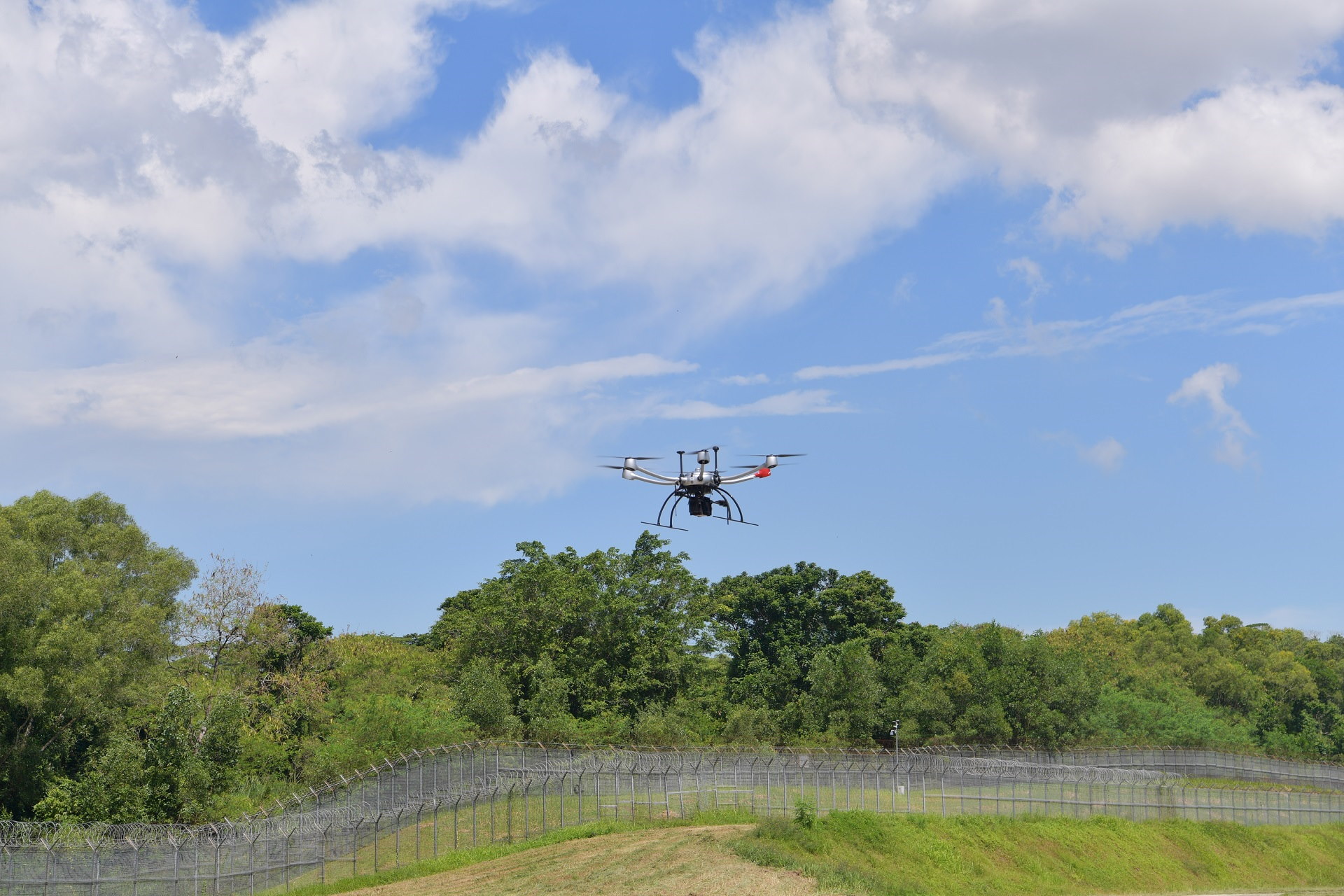RSAF trials AI and robotics for smart airbase transformation
The Republic of Singapore Air Force (RSAF) is tapping on advancements in robotics, data analytics and artificial intelligence (AI) to be more agile and efficient in its air base operations.//Story by Teo Jing Ting
//Photos by Chua Soon Lye
Drones patrolling the airbase perimeter and conducting runway damage assessments, automated vehicles for ferrying logistics and personnel and a faster, more efficient way of loading munitions onto aircraft – these are some of the tasks that could be augmented by the new technologies that the RSAF is trialling as part of its smart airbase developments.
"Smart airbase is about developing air power in a more effective and efficient manner, providing manpower and time-savings. This translates into a more robust and resilient air force," said Colonel (COL) Mark Lim, Commander Paya Lebar Air Base.
"By tapping on 4th industrial revolution technologies, we plan to position the air force to operate in a high-tempo and highly complex environment."
Faster, more precise munitions loading
One of these initiatives is the enhanced munitions loader which provides a faster way of loading munitions onto fighter aircraft. And it plugs into advanced data analytics and robotics technologies to deliver more efficiency.
For instance, the enhanced loader requires only one personnel to operate as compared to the current three-man team. This provides a manpower savings of up to 66 per cent.
Jointly developed by the RSAF, Defence Science and Technology Agency (DSTA) and local engineering firm Hope Technik, the enhanced loader also reduces the time taken to load the munitions by more than 30 per cent.
One of the key features of the enhanced munitions loader is the omni-directional Mecanum wheels, which makes it highly-manoeuvrable in tight spaces such as aircraft hangars. This allows the loader to move not only back and forth, but also laterally and diagonally. It can even do a 360-degree turn on-the-spot!
"One of the feedback is that the team has to drive the current loader back and forth multiple times in order to load the munitions onto the aircraft as the space in the hanger is very tight," said Wee Qiquan, project manager (Air Systems programme centre) from DSTA.
"So we came up with the omni-directional Mecanum wheels, which is one-of-a-kind. This makes the loader movements faster and more precise, thus enhancing operations."
The enhanced munitions loader is also safer for operators. As it runs on electricity, it is much quieter compared to the current version which runs on diesel.
"It is usually very hard to communicate with one another when we're operating the current loader as it is very loud and noisy and we have rely on hand signals," said Military Expert (ME) 2 Gopinathan S/O Bala Chandran.
The Maintenance Training Flight Instructor from the 7 Air Engineering and Logistics Group was one of the operators who worked with Mr Wee on the giving feedback for the design. "The enhanced loader is much quieter, so it's easier for us to communicate and makes it much safer to operate," said ME2 Gopinathan.
Following the completion of trials, the enhanced munitions loader is expected to be deployed for operations this year.
Automated logistics and personnel transportation
As part of the RSAF's initiatives to go green, trials are also being conducted on the use of Automated Vehicles (AVs) within airbases.
Currently on a three-year trial, these unmanned vehicles are used to transport logistics loads and personnel, providing a more convenient and faster method of getting around the airbase along pre-programmed routes.
A mobile application will also be developed to allow users to call for on-demand ferry services. This will enhance efficiency in transportation within the airbase.
The AVs are still in phase one of their trial where they are used to ferry logistics loads. Phase two – which will trial the transport of personnel – will commence in August this year.
Drones for damage assessment
Trials are also being conducted for drones to assess damage on a runway. Enhanced with AI, the drones are able to detect, classify and share data on the extent of damage in real-time.
Currently, they are able to sort the damage into four categories, including large and medium craters, potholes as well as foreign object debris. Decision Support Systems will then process the data and prioritise which repair operations should be done first in order to minimise flight disruptions.
Remotely deployed, these drones will reduce the manpower and time taken for runway damage assessments while enhancing personnel safety.
Unmanned patrol in airbases
Plans are also underway for the drones to be used for perimeter patrols. With the ability to detect, identify and track targets, as well as provide a real-time situational display through live-video feed, the drones will be used to enhance the security of the airbases.
These drones will operate alongside security troopers, providing them with live-tracking updates and a more efficient way of locating potential intruders. For instance, when a drone spots a suspicious target, it will track the person. The real-time updates will alert the nearest troopers to the location and quickly apprehend the intruder.
The drones are also equipped with infra-red sensors for better visual detection and tracking during night patrols.
Automated aircraft inspection and maintenance
In the area of aircraft maintenance, the RSAF is developing an automated aircraft inspection system to reduce aircraft turnaround time and workload for aircraft engineers.
Existing aircraft hangar sensors are enhanced with improved AI algorithms to better classify and detect defects. Since June, trials have also commenced for unmanned ground vehicles to conduct aircraft inspection.
In addition, the RSAF is planning to trial the Smart Fleet Management System for improved insights on aircraft performance and pre-emptive maintenance actions.
When asked how the RSAF will manage the use of these technologies, COL Lim said: "All these initiatives will be implemented progressively and in close partnership with DSTA, and fielded after vigorous evaluation and testing."
